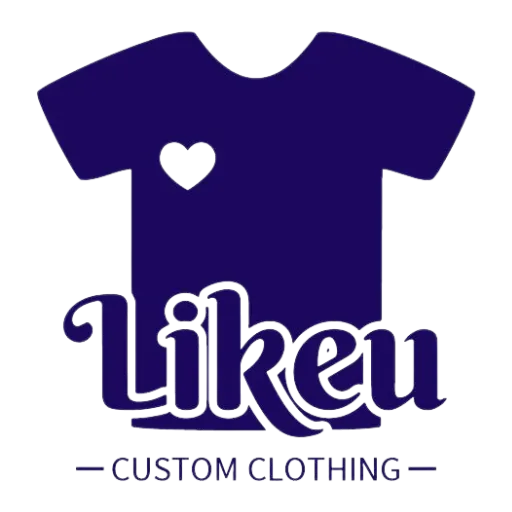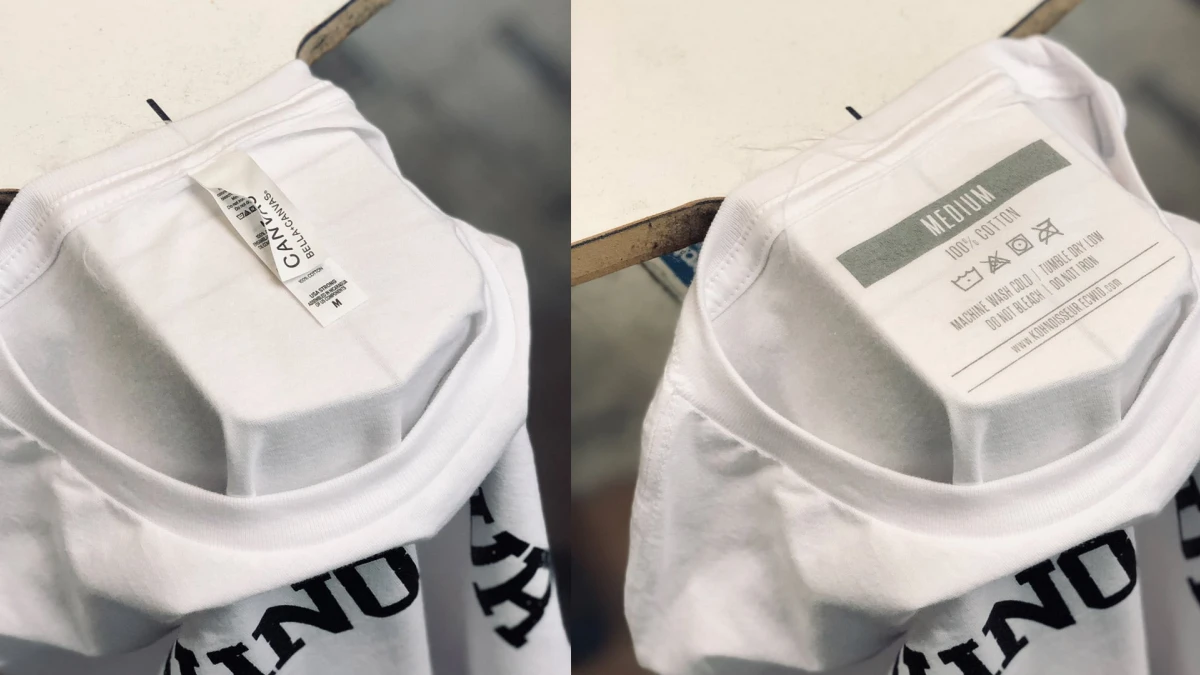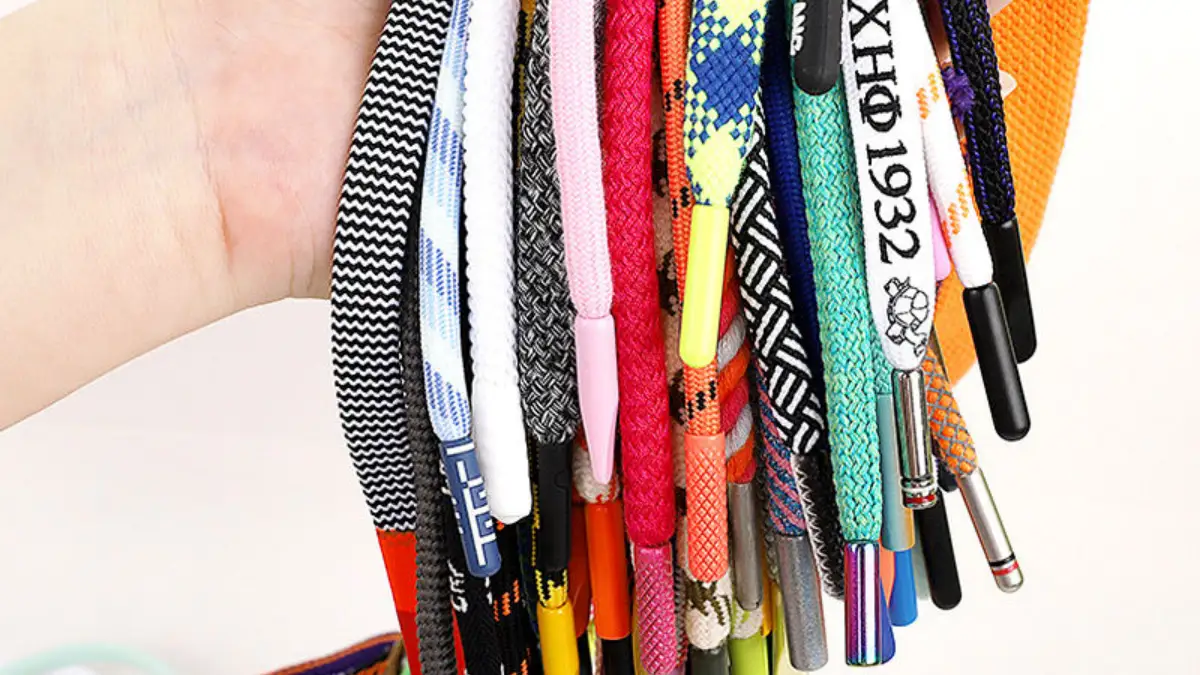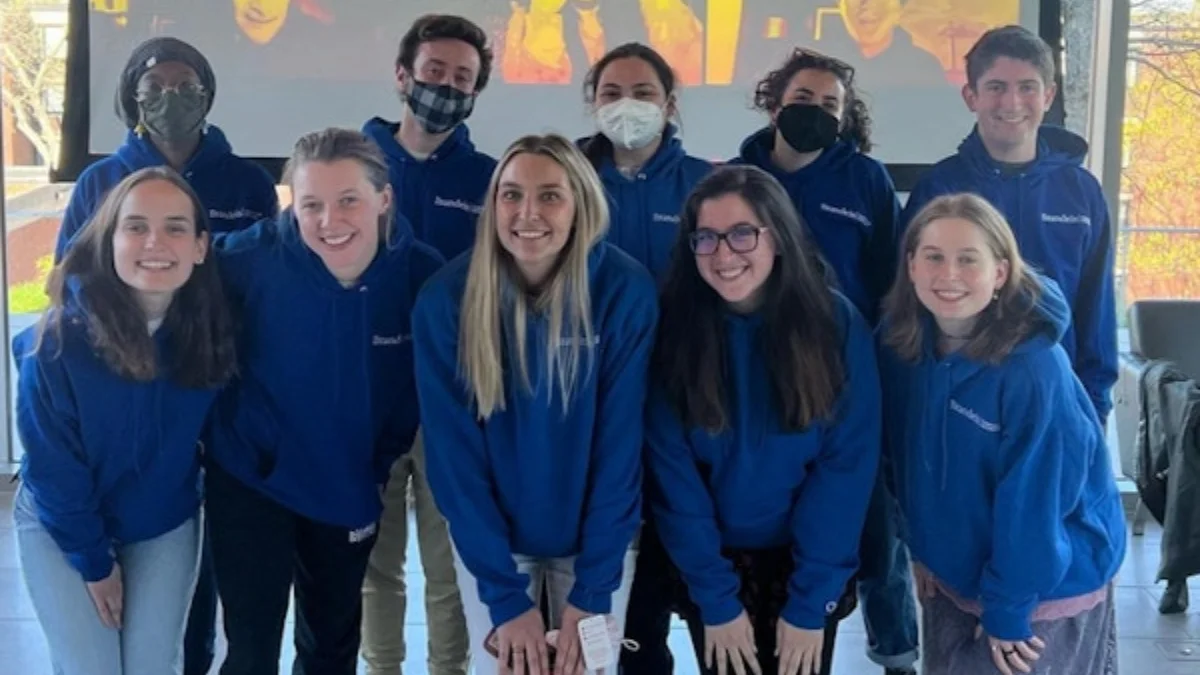Creating a unique private label t shirt starts with knowing your brand. You need to design shirts that show your ideas. Pick a manufacturer you can trust. Make sure the shirts are good quality. Private label clothing helps your brand become strong. Studies say 85% of people remember who gave them branded clothes. Also, 72% of buyers think product quality shows a company’s reputation. These facts show private label clothing helps people notice your brand. If you want to be different in private label fashion, Likeu Clothing can help you at every step.
Key Takeaways
Make your brand strong by using clear logos, colors, and messages. This helps you connect with customers and stand out.
Learn about your target audience and market. This helps you make designs and products they like and need.
Pick good materials and trusted manufacturers. This makes sure your t-shirts look nice and last a long time.
Add special graphics, colors, and labels to your designs. This makes your shirts unique and personal.
Plan your launch well and use smart marketing and distribution. This helps your brand grow and reach more people.
Define Your Private Label Clothing Brand
Brand Identity
You build your private label clothing brand by making a strong identity. This means you decide what your brand is about and how people see it. A clear identity helps customers remember you and trust your products. With private labeling clothing, you control every detail, like the logo and the words on your shirts.
A strong brand identity helps customers feel connected to you.
Using the same logos, colors, and messages makes your brand look professional.
When your brand matches your values, people want to buy from you.
Research shows brands with a clear identity and story get more loyal customers. This helps you stand out in private label fashion and keeps people coming back.
Target Audience
You must know who will wear your private label clothing. Start by learning about your target audience. Use online surveys, interviews, and focus groups to find out what your customers want. Look at market reports and check your competitors.
The U.S. private label market was $199 billion in 2023, and apparel was a big part.
Knowing your audience helps you find what makes your brand special.
When you know your audience, you can make products and ads that fit them.
Using different research methods helps you plan your private label strategy. This gives you a better chance to do well in a busy market.
Brand Story
Your brand story makes your clothing line special. It tells why you started, what you believe, and how you help your customers. Good stories build trust and loyalty. Many top brands use stories to connect with people.
Brand | Storytelling Strategy | Impact on Loyalty and Growth |
|---|---|---|
Nike | Athlete stories, real-life challenges, social issues | Built strong emotional bonds and loyal fans |
Airbnb | Guest and host stories, unique experiences | Created trust and a loyal community |
Coca-Cola | Happiness, friendship, uplifting messages | Drove global brand loyalty |
When you share your story, you make your brand feel human. This helps people feel part of your journey. Telling your story gives you an advantage and helps you succeed for a long time.
Steps to Start a Private Label Clothing Line
Starting a private label clothing brand needs good planning. You must follow steps to help your products stand out. This also helps you reach the right customers. Here are the main steps to start a private label clothing line:
Market Research
Market research is the first thing you should do. You need to learn what your customers want. You also need to see what your competitors sell. This helps you avoid mistakes and save money. Many brands use steps to study trends and test ideas. They check demand before making big orders.
Test with small orders to guess demand. This helps you not get stuck with extra clothes.
Use research, testing, and samples to check your ideas. This lowers your risk.
Look at what customers like, trends, and rivals to find good product ideas.
Tip: Research shows 52% of shoppers now pick private label clothing for better prices and quality. More people want premium private labels. You must know what buyers want. When you listen to feedback and study the market, you can make products that fit their needs.
You should also think about costs, shipping, and problems. Some stores depend on manufacturers. But you can lower risks by working with them and doing your own research. This guide helps you choose the right products and avoid mistakes.
Design Portfolio
A strong design portfolio makes your private label clothing brand special. You need to make collections that show your style. These should match your brand identity. Use steps to plan your designs and keep a clear theme.
A good portfolio does more than look nice. It helps customers see your ideas. It also makes shopping easier. Studies show customers buy more when they see full outfits. They like collections that give them ideas and make shopping fun. When you offer bundles or themed sets, you build loyalty and boost sales.
Note: Special touches, like unique designs or bundles, help people feel close to your brand. This keeps customers coming back to your private label clothing brand.
You should use feedback from your audience to make your designs better. This guide helps you build a portfolio that gets attention and grows sales.
Sourcing Materials
Picking the right materials is very important. Good fabrics make your private label clothing last longer and feel better. Most manufacturers say fabric costs are 60-70% of the total cost. If you pick good materials, your products will be worth more.
Metric | Statistic / Fact | Impact on Product Success |
|---|---|---|
Fabric Cost Proportion | Fabric accounts for 60-70% of garment production cost | High-quality fabric increases product value and customer satisfaction. |
Material Planning Accuracy | Target cutting error rate of 2-3% (97-98% garments cut equal garments produced) | Accurate planning reduces waste and saves money. |
Sample Approval Rate | Higher sample approval rates correlate with increased order volumes | Good materials lead to better samples and more orders. |
Quality Inspection Failures | 21% failure in Cutting, 39% failure in Sewing departments | Poor materials cause more mistakes and higher costs. |
Dead Stock (Fabric Wastage) | 18% fabric wastage per order; 41% of wastage is dead stock | Better sourcing reduces leftover fabric and saves money. |
Cut to Ship Ratio | Between 95% and 99% | Efficient use of materials leads to faster delivery and happier customers. |
You should always check samples before making big orders. Many stores and manufacturers use these steps to make sure their products are good. When you find a manufacturer who uses good materials, your private labeling clothing will stand out.
Tip: Brands like Gap got a better reputation by picking better materials. Customers notice when clothes last longer and feel better. This builds trust and makes them return.
By following these steps to start a private label clothing line, you build a strong base for your business. A clear theme and strong look help your brand shine. Use this guide to make smart choices and grow your private label clothing brand.
Customize Your Designs for Private Label T Shirt
Design Elements
You shape the look and feel of your private label t shirt by choosing the right design elements. These elements include graphics, text, colors, and the cut of the shirt. Each part plays a big role in how people see your brand. Research shows that the design on a t-shirt, whether it is a graphic or text, can change how customers feel about your product. The color and the design work together to catch attention and make your shirts stand out.
You can focus on these main areas when you design your shirts:
Graphics and Text: Bold images or catchy phrases help your shirts get noticed. People often choose shirts that let them express who they are.
Color Choices: The right color can make your design pop. Some colors work better with certain designs, so test different combinations.
Neck and Body Design: The shape of the neck and the way the shirt fits matter to buyers. A unique neckline or a special cut on the sleeves or body can set your shirts apart.
Cultural and Personal Touches: Adding designs that reflect local culture or personal stories helps your brand connect with more people.
Tip: Unique design elements help your shirts become more than just clothing. They turn into a way for people to show their style and values.
Customization Techniques
You have many ways to customize your designs for private label t shirt collections. Customization lets you control every detail, from the fabric to the finish. This control helps you create shirts that match your brand and meet your customers’ needs. Customization is key to making your products stand out in a busy market. When you talk clearly with your manufacturer and pick one with flexibility, you can adjust your designs based on feedback. This approach helps you create shirts that people want to wear.
Here are some popular customization techniques:
Screen Printing: This method works well for bold graphics and large orders. It gives bright colors and lasts a long time.
Embroidery: You can add logos or small designs with thread. Embroidery gives a high-quality look and feel.
Direct-to-Garment (DTG) Printing: This technique prints detailed images right onto the shirt. It is good for small batches or complex designs.
Heat Transfer: You use heat to press designs onto shirts. This method works for both small and large orders.
Custom Labels and Tags: You can add your own brand name inside the shirt. This makes your shirts look professional and unique.
Customization flexibility lets you change your designs quickly. You can respond to trends or customer feedback without starting from scratch. Private label clothing gives you full control over the design, fabric, and finish. This control helps you build a brand that people remember.
Note: Custom t-shirts help your brand become visible in a personal way. When people wear your shirts, they show your brand to others. This turns your customers into walking ads for your business.
Differentiation
You need to make your private label t shirt different from others. Differentiation means your shirts stand out in the market. You can do this by using special designs, unique materials, or creative packaging. When you offer something new, customers notice your brand and remember it.
You can measure how well your shirts stand out by looking at these metrics:
Metric | Description |
|---|---|
Total number of t-shirts sold. Shows if people like your designs. | |
Market Share | Your share of the market compared to others. Tells you how strong your brand is. |
Customer Acquisition Cost | Cost to get a new customer. Lower costs mean your designs attract more buyers. |
Conversion Rate | Percentage of visitors who buy. High rates show your designs work well. |
You can also check how people feel about your shirts:
Recognition: Do people know your design or logo?
Memorability: Do they remember your shirts after seeing them?
Emotional Response: How do your designs make people feel?
Audience Perception: What do people think your brand stands for?
You can use surveys, focus groups, or social media to learn what people think. This feedback helps you improve your designs and keep your brand fresh.
Remember: When you customize your designs and use flexibility, you build a brand that stands out. You can change your shirts to fit new trends or customer needs. This keeps your private label t shirt business strong and growing.
Private Label T Shirt Manufacturer Selection
Supplier Research
You must look at many suppliers before you pick one. Many brands do well because they choose good manufacturers. You should find suppliers who fit your needs and values.
Quality and service are also important, especially for big orders.
Trendy shirts need fast and flexible suppliers. Basic shirts focus more on price.
Target and Fashion Nova grew fast by picking the right manufacturers.
The private label clothing market is getting bigger, so picking a good partner helps you stay ahead.
You should check each supplier for quality, cost, lead time, and service. Experts say to look at how long shirts last, if colors match, and if there are many mistakes. Good research helps you avoid problems and keeps your brand strong.
Quality and MOQs
Quality control is very important in private label clothing. You want shirts that last and look nice. Manufacturers must meet your standards every time.
Always check samples before you order a lot.
Find manufacturers who check products at every step.
Good quality makes customers trust your brand.
Minimum order quantities (MOQs) are important too. Some manufacturers want big orders, but others let you order less. Pick a partner whose MOQs fit your business. Fast delivery helps you follow trends and listen to customers. Good manufacturers help you avoid running out of stock and keep your store open.
Why Likeu Clothing
You need a partner who knows private label t shirt needs. Likeu Clothing is special because they care about quality, speed, and custom options.
They let new and growing stores order small or big amounts.
Their team checks every order for quality and details.
Likeu Clothing helps you make custom clothes, so your designs are unique.
Many stores trust Likeu Clothing because they deliver on time and help you grow your brand. You get help from design to delivery. When you work with a manufacturer like Likeu Clothing, your private label clothing business can do well for a long time.
Customization of Labels and Packaging
Custom Labels and Tags
You can help your private label t-shirts stand out with custom labels and tags. These small things show your brand’s style and help people remember you. Custom neck labels, woven tags, and printed tags all add something special. When you use good labels, you show you care about quality and style.
Custom labels help people trust your brand and see its personality.
Strong, well-made tags keep your shirts looking nice after many washes.
Special designs make your shirts different from others.
Labels give important facts, so buyers feel sure about what they get.
Many brands have seen more loyal customers and a better brand image after using custom tags. You can learn more about custom tag choices at Likeu Clothing’s custom tags page.
Aspect | Generic Labels | Custom Labels |
|---|---|---|
Brand Identity | Limited | Matches your brand’s style |
Design | Standard | Made for your brand’s needs |
Audience Appeal | Less impact | Stronger connection with your audience |
Uniqueness | Common | Unique to your brand |
Durability | Basic | High-quality, lasts longer |
Packaging Options
You can use creative packaging to make customers happy. Good packaging keeps your shirts safe and makes your brand look professional. Many people pick products just because of the packaging. For example, 72% of shoppers say packaging helps them decide what to buy. Simple, easy-to-open packaging makes people like your brand. Eco-friendly packaging is also important. Over half of US shoppers care about the environment when they shop.
Some popular packaging choices are:
Resealable bags that keep shirts fresh and are easy to use
Recycled boxes that show you care about the planet
Simple designs that look modern
When you use smart packaging, you show you care about your customers’ needs and can change with trends.
Brand Storytelling
Brand storytelling helps connect your products to your customers. You can use labels and packaging to share your brand’s mission or values. For example, if you use recycled materials, you can tell that story on your packaging. This helps customers feel good about their choice and makes them want to buy again.
Packaging with a story helps people feel close to your brand.
Using the same look and message builds trust.
Fun things like QR codes let customers learn more about your brand.
When you use custom labels and packaging, you give your business more ways to stand out and be flexible.
Quality Control and Compliance
Sample Approval
You must check samples before making lots of shirts. This step keeps your brand safe and your shirts the same. When you look at samples, you check color, logo spot, and fabric feel. If something is wrong, you can ask for changes. This way, you control what the final shirt looks like.
You look at designs or samples before making many shirts.
You match samples to your brand rules.
You give notes and ask for fixes until you like it.
You say yes to the last sample before the factory starts.
A good sample check helps you find problems early. You save money and keep buyers happy. Big brands use this step to make sure every shirt is right.
Quality Standards
You need clear rules for your private label t-shirts. These rules help you make shirts that last and look nice. Many brands use lean steps and ISO 9001 to make things better and waste less. You can use real-time checks and data to find problems fast.
Lean Six Sigma cuts waste and makes work faster.
ISO 9001 gives you steps to always get better.
Real-time checks help you fix problems right away.
Data helps you see mistakes and make better shirts.
A strong quality check system looks at every step. You can use tech to make sure your shirts are good. Brands that check for quality have fewer returns and more happy buyers.
Labeling Laws
You must follow labeling laws to keep your business safe. U.S. law says you need clear, lasting labels in English. Labels must show fiber type, where it was made, maker, care steps, and warnings. Some states have extra rules for chemicals or boxes.
The Voluntary Sustainable Apparel Labeling Act wants clear, checked labels about being green.
California, New York, and Washington have rules for safe packaging and the environment.
Labels must be true and not trick people.
Following label laws keeps you from getting fined and builds trust. True labels show you care about safety and the planet.
Launch and Market Your Private Label T Shirt
Launch Plan
You need a good plan to launch your private label t shirt. First, set goals for sales and happy customers. Also, plan how you will deliver shirts on time. Use data to learn what your customers like. Talk with your manufacturers to stop delays and keep shirts high quality. Check what other brands charge to help set your prices. Watch your sales numbers and change your plan if needed.
A strong plan helps your business grow quickly. Here are some results from brands with good launch plans:
Metric Category | Focus Area | Validated Impact / Benchmark |
|---|---|---|
Sales Growth | Market Trends | |
Customer Satisfaction | Product Quality | 15% improvement |
Net Promoter Score | Customer Loyalty | +10 points |
Monthly Revenue | Sales Performance | +25% increase |
Delivery Reliability | Logistics & Distribution | 40% fewer shipping delays |
Tip: Brands that use data and work with suppliers do better when they launch.
Marketing Strategy
A smart marketing plan helps you sell more t-shirts. Use social media, email, and your website to reach people. Send special deals and messages to connect with buyers. Research shows promotions can make sales go up a lot. People also spend more time on your site.
Tell your brand story on social media.
Give new customers special offers.
Show photos and videos of your shirts being worn.
You can use Likeu Clothing’s customization services to make your brand special.
Distribution
You need a good way to get shirts to your customers. Many stores sell online and in stores. Sites like Amazon and Shopify help you reach more people. In-store displays and QR codes make shopping easy and fun. Mobile apps and social media help you keep customers coming back.
Selling in many ways helps you reach most shoppers.
Good inventory systems help keep shirts in stock.
Work with stores and wholesalers to grow your brand.
Note: Brands that use many ways to sell and work with good partners can reach more people and keep customers happy.
You can build a strong brand by following clear steps. Start with your brand identity, design unique shirts, and choose quality materials. Work with trusted partners for private label clothing. Check your samples and follow the rules. Plan your launch and use smart marketing. If you want expert help, visit Likeu Clothing for more support and ideas.
FAQ
What is a private label t-shirt?
A private label t-shirt is a shirt you design and sell under your own brand. You control the look, the label, and the packaging. You work with a manufacturer to make shirts that match your ideas.
How do you choose the right t-shirt material?
You should pick materials that feel good and last long. Cotton is soft and popular. Blends can add stretch or strength. Always ask for samples before you order. Good fabric helps your shirts stand out.
Can you order small amounts when starting?
Yes, many manufacturers let you order small amounts. This helps you test your designs and see what customers like. You can grow your orders as your business grows.
How do you make your t-shirt designs unique?
You can use bold graphics, special colors, or custom labels. Try adding your story or local culture to your designs. Unique touches help people remember your brand.
Do you need to follow any rules for labels?
Yes, you must follow laws for labels. Labels need to show fabric type, where the shirt was made, and care instructions. Clear labels help customers trust your brand.





